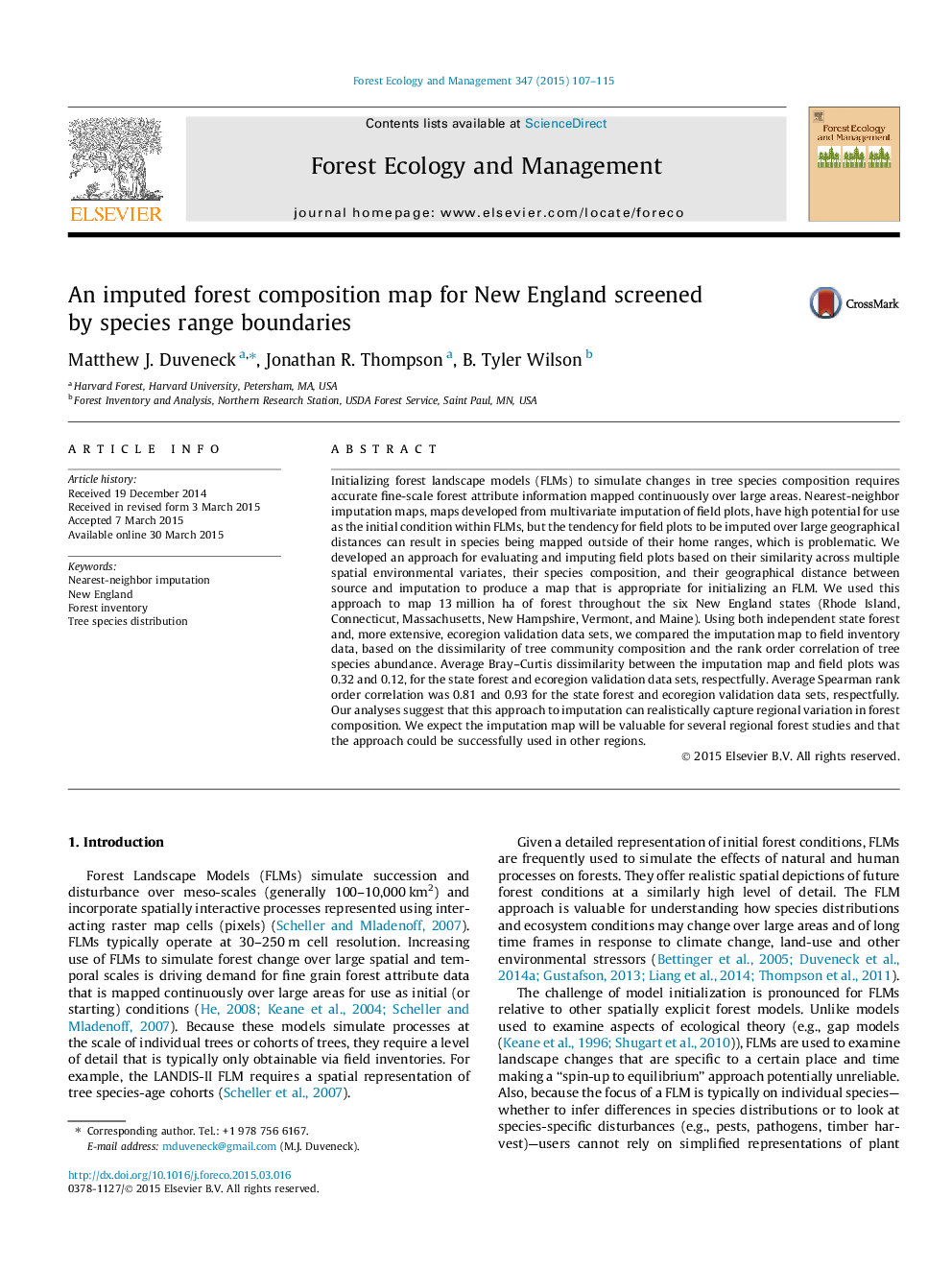| کد مقاله | کد نشریه | سال انتشار | مقاله انگلیسی | نسخه تمام متن |
|---|---|---|---|---|
| 86249 | 159174 | 2015 | 9 صفحه PDF | دانلود رایگان |
• We provided a New England forest composition map imputing inventory plots to pixels.
• Imputation was based on feature-space, species composition, and geographic distance.
• Our map will be valuable for uses including forest landscape modeling.
• We found strong validation agreement between inventory data and our imputation.
Initializing forest landscape models (FLMs) to simulate changes in tree species composition requires accurate fine-scale forest attribute information mapped continuously over large areas. Nearest-neighbor imputation maps, maps developed from multivariate imputation of field plots, have high potential for use as the initial condition within FLMs, but the tendency for field plots to be imputed over large geographical distances can result in species being mapped outside of their home ranges, which is problematic. We developed an approach for evaluating and imputing field plots based on their similarity across multiple spatial environmental variates, their species composition, and their geographical distance between source and imputation to produce a map that is appropriate for initializing an FLM. We used this approach to map 13 million ha of forest throughout the six New England states (Rhode Island, Connecticut, Massachusetts, New Hampshire, Vermont, and Maine). Using both independent state forest and, more extensive, ecoregion validation data sets, we compared the imputation map to field inventory data, based on the dissimilarity of tree community composition and the rank order correlation of tree species abundance. Average Bray–Curtis dissimilarity between the imputation map and field plots was 0.32 and 0.12, for the state forest and ecoregion validation data sets, respectfully. Average Spearman rank order correlation was 0.81 and 0.93 for the state forest and ecoregion validation data sets, respectfully. Our analyses suggest that this approach to imputation can realistically capture regional variation in forest composition. We expect the imputation map will be valuable for several regional forest studies and that the approach could be successfully used in other regions.
Journal: Forest Ecology and Management - Volume 347, 1 July 2015, Pages 107–115
